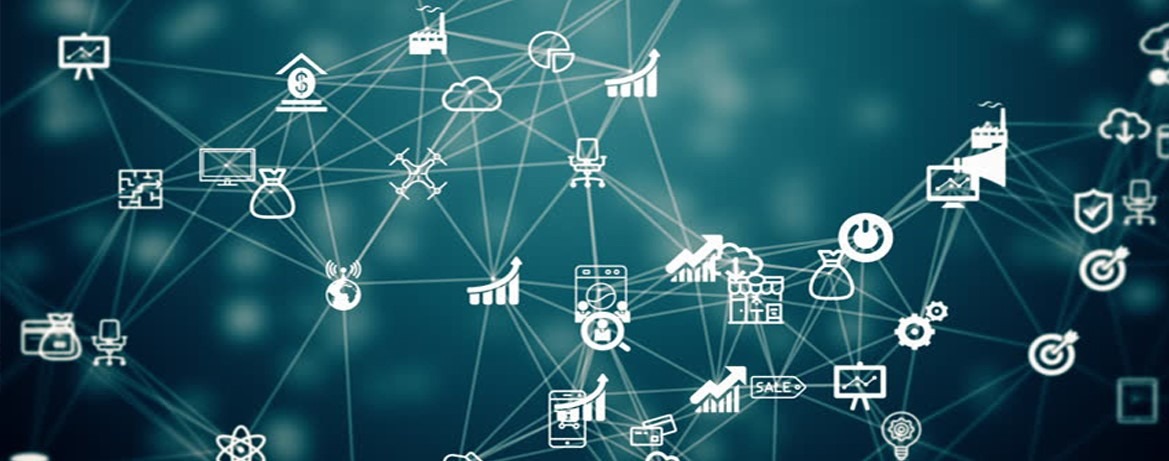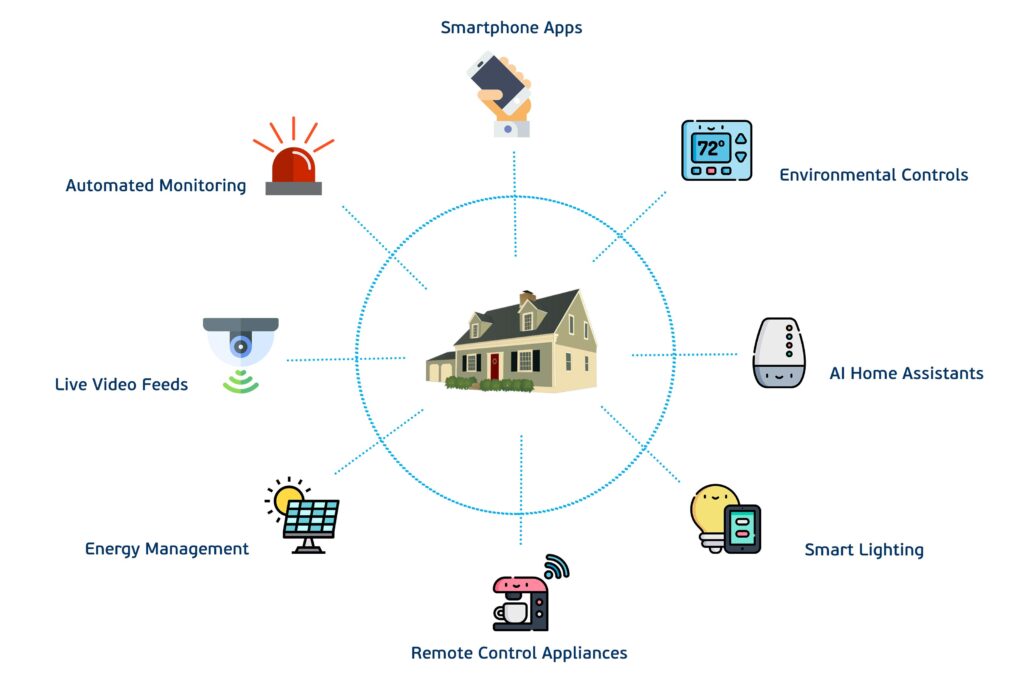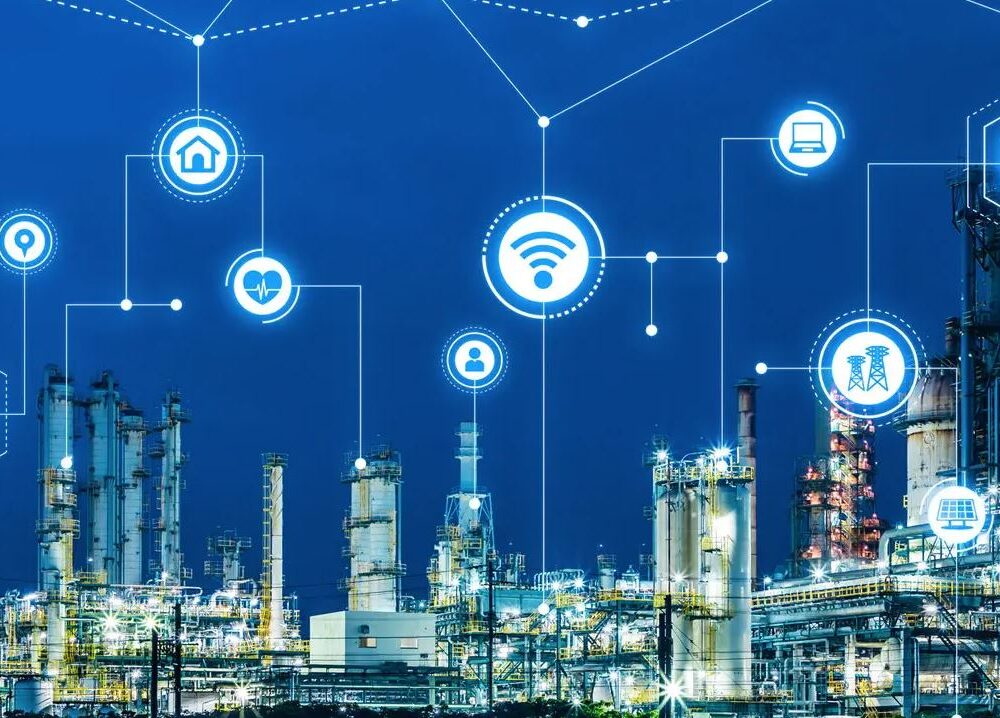
01 Mar IoT Devices : Understanding the Technology
IoT Devices
AMS-IoT is a leading provider of engineering and IoT services, and we understand the importance of staying up-to-date with the latest trends and developments in this rapidly evolving field. Welcome to the world of IoT devices, where everyday objects are connected to the internet, making our lives more convenient, efficient and comfortable. In this blog post, we will discuss the three types of IoT devices: smart home devices, wearable devices, and industrial IoT devices.
Types of IoT Devices
Definition of IoT
IoT refers to the interconnected network of physical objects, automobiles, buildings, and other items that are implanted with sensors, programs, and network communication, enable them to gather and share data.
Significance of IoT
IoT technology has the potential to revolutionize the way we live and work by connecting everyday devices and enabling them to communicate with each other and with us. It can improve efficiency, save costs, and create new opportunities in various industries.
Brief history of IoT development
The concept of IoT has been around for decades, but it started to gain traction in the early 2000s with the development of low-cost sensors and wireless communication technologies. Today, IoT is being widely adopted across various industries, including consumer electronics, healthcare, manufacturing, and transportation.
Current state of IoT in the industry
IoT has become a rapidly growing market, with global spending on IoT expected to reach $1.1 trillion in 2023. The number of connected devices is also projected to increase from 22.5 billion in 2018 to 75.4 billion in 2025.
Key Features of IoT Devices
Connectivity: IoT devices rely on various wireless communication technologies, such as Wi-Fi, Bluetooth, and cellular, to connect to the internet and other devices.
Sensors and actuators: IoT devices are equipped with various sensors and actuators that can collect and transmit data, as well as control other devices.
Processing power and storage: IoT devices need to have sufficient processing power and storage capacity to handle the data they collect and transmit.
Advancements In IoT Devices
5G connectivity: 5G networks offer faster speeds and lower latency than previous generations of cellular networks, which can improve the performance of IoT devices.
Edge computing: Edge computing involves processing data at the source, rather than sending it to a central location for processing. This can improve the speed and efficiency of IoT devices.
Artificial intelligence and machine learning: These technologies are being used to analyze the data collected by IoT devices and make decisions based on it.
IoT Applications
Consumer Applications
Smart homes: IoT devices can be used to automate various aspects of the home, such as controlling lighting and temperature, monitoring security, and more.
Smart cities: IoT can be used to improve the efficiency and sustainability of cities by, for example, optimizing traffic flow and managing energy consumption.
Wearables: Wearable devices can be used to track various health and fitness metrics, such as steps taken, heart rate, and sleep patterns.
Smart agriculture: IoT devices can be used in farming to monitor soil moisture, temperature, and nutrient levels, and to automate irrigation and fertilization systems.


Industrial Applications
Industrial IoT (IIoT): IoT can be used in industries to optimize processes, monitor equipment and machines, and collect data for predictive maintenance.
Asset tracking and management: IoT devices can be used to track the location and status of assets, such as vehicles and equipment, in real-time.
Predictive maintenance: IoT devices can be used to monitor the performance of equipment and predict when it may need maintenance, which can improve efficiency and reduce downtime.
Industrial Automation: IoT devices can be used to automate various processes in industrial settings, such as controlling machinery and monitoring production lines.
Challenges and Considerations
Security and privacy concerns: IoT devices collect and transmit a lot of personal and sensitive information, which can be vulnerable to hacking and other security threats. It’s essential to implement robust security measures to protect this data.
Interoperability and standardization: IoT devices from different manufacturers may not always be able to communicate with each other, which can limit their functionality and make it more difficult to manage them. Standardization can help address this issue.
Scalability and infrastructure: As the number of IoT devices continues to grow, it’s crucial to have the necessary infrastructure in place to support them, including robust networks, data storage, and processing capabilities.
Regulation and compliance: IoT devices and their data may be subject to various regulations, such as data privacy laws, which need to be taken into consideration when developing and deploying them.
Future of IoT
Predictions and trends: IoT is expected to continue to grow rapidly in the coming years, with an increasing number of devices and applications being developed and adopted. Some of the key trends include the expansion of IoT into new industries, the emergence of new technologies such as 5G and edge computing, and the increasing use of AI and machine learning.
Impact on society and economy: IoT has the potential to bring many benefits, including improved efficiency, cost savings, and new opportunities for innovation. However, it also brings new challenges, such as security and privacy concerns, which need to be addressed.
Challenges and opportunities: The rapid growth of IoT presents both challenges and opportunities for companies and individuals. Keeping up with the latest technologies and understanding the potential benefits and risks will be essential for success.
Conclusion
Summary of key points
IoT technology is rapidly growing and has the potential to revolutionize the way we live and work. It involves connecting everyday devices and enabling them to communicate with each other and with us. IoT devices come in different forms, such as smart home devices, wearables, and industrial IoT devices. IoT technology also has its challenges, such as security and privacy concerns, interoperability and standardization, scalability and infrastructure, and regulation and compliance.
With the rapid advancement of IoT technology, it’s essential to stay informed about the latest developments, trends, and best practices. By doing so, we can fully harness the potential of IoT and address the challenges it presents.